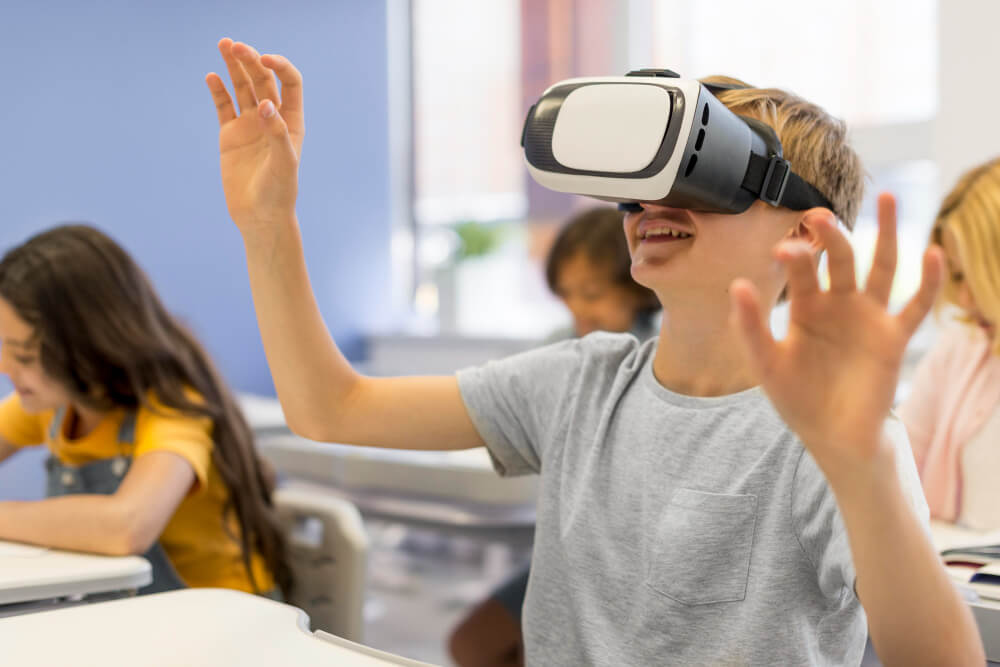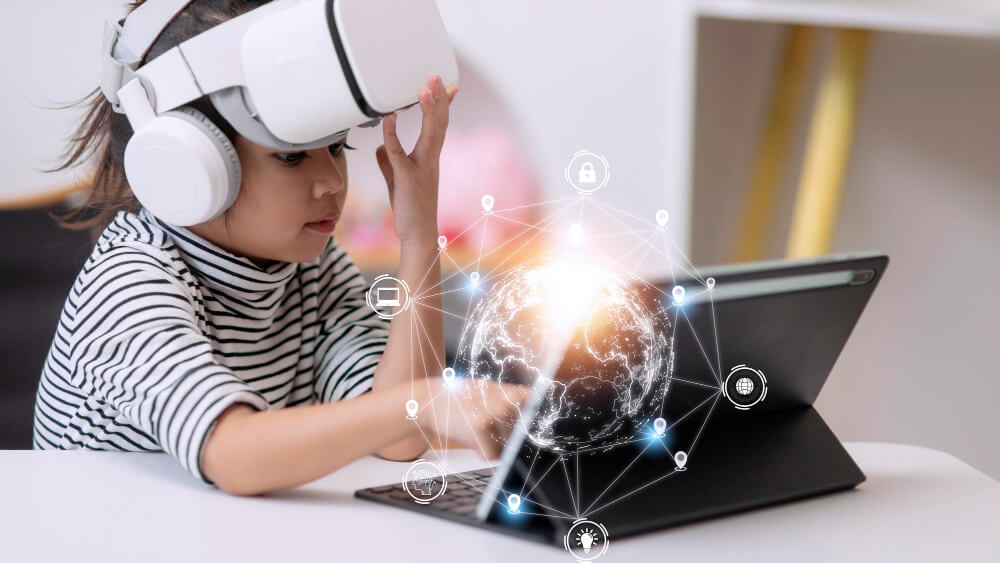
In the realm of design education, immersive technology and synchronous hybrid learning have emerged as powerful tools to enhance teaching and learning experiences. These methodologies have gained significant attention, particularly in design education. In this blog post, we will explore the article “An Empirical Study on Immersive Technology in Synchronous Hybrid Learning in Design Education” to answer key questions about immersive technology, hybrid learning, synchronous hybrid learning, and their effectiveness in enhancing student learning.
What is Immersive Technology?

Immersive technology refers to the use of virtual reality (VR), augmented reality (AR), and mixed reality (MR) to create realistic and interactive digital environments. These technologies immerse users in a simulated or enhanced reality, blurring the boundaries between the physical and digital worlds. With immersive technology, students can engage with content and experiences that go beyond traditional two-dimensional learning materials. This technology offers a multisensory and interactive learning experience, enabling students to explore and interact with virtual objects and environments.
What is Hybrid Learning?
Hybrid learning, also known as blended learning, combines face-to-face instruction with online learning components. It integrates traditional classroom-based teaching with digital resources and activities. In a hybrid learning environment, students engage in both in-person interactions with teachers and peers, as well as online learning experiences. This approach allows for flexibility in terms of time, location, and pace of learning. Hybrid learning leverages the benefits of both traditional and digital learning methods to create a comprehensive and dynamic educational experience.
What is Synchronous Hybrid Learning?
Synchronous hybrid learning takes hybrid learning a step further by incorporating synchronous interactions into the educational experience. In this approach, students participate in real-time, interactive learning activities that combine face-to-face and online components. Synchronous hybrid learning allows for simultaneous engagement and collaboration among students and teachers, regardless of their physical location. This approach often involves the use of video conferencing tools, live discussions, and virtual classrooms to facilitate real-time interactions and foster a sense of community among students.
How Effective are these Approaches and Technology in Enhancing Student Learning?

The article highlights the positive impact of immersive technology and synchronous hybrid learning in enhancing student learning outcomes. The integration of immersive technology in synchronous hybrid learning environments has been found to significantly enhance student engagement, critical thinking, and creativity. By immersing students in realistic and interactive digital environments, immersive technology enables them to analyze and solve design problems in a more creative and innovative manner. The ability to manipulate virtual objects and environments enhances students’ spatial reasoning and problem-solving abilities, ultimately leading to improved learning outcomes.
Moreover, the synchronous nature of hybrid learning allows for real-time interactions and collaboration among students and teachers. This fosters a sense of community and engagement, which is crucial for effective learning experiences. The flexibility offered by hybrid learning also allows students to learn at their own pace and convenience, accommodating diverse learning needs and preferences.
The combination of immersive technology and synchronous hybrid learning provides students with dynamic and interactive learning experiences. These approaches enable students to explore design concepts, visualize their ideas, and receive immediate feedback. The hands-on nature of immersive technology and the collaborative nature of synchronous hybrid learning foster critical thinking, problem-solving, and creativity among students.
In conclusion, immersive technology and synchronous hybrid learning have proven to be effective approaches in enhancing student learning outcomes in design education. By leveraging these methodologies, teachers can create engaging and interactive learning experiences that foster student engagement, critical thinking, and creativity. As technology continues to advance, the integration of immersive technology within a synchronous hybrid learning environment holds great promise for transforming the way students learn and engage with design concepts.
Reference
Kee, T., Zhang, H. & King, R.B. An empirical study on immersive technology in synchronous hybrid learning in design education. Int J Technol Des Educ (2023). https://doi.org/10.1007/s10798-023-09855-5



